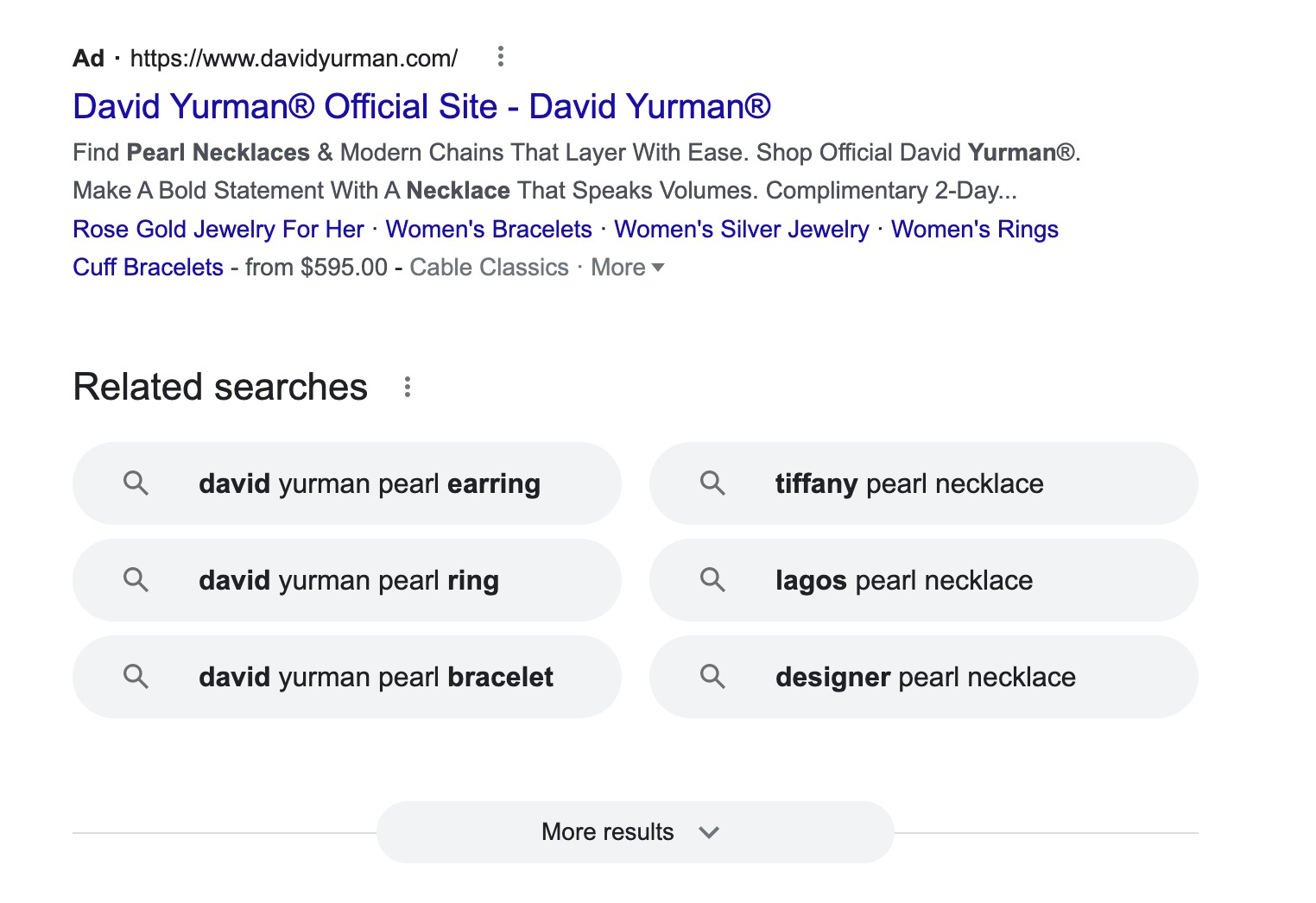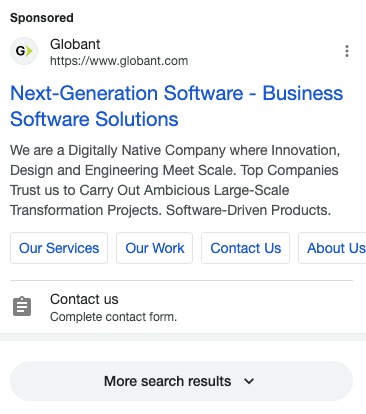There are two types of results on Google: search results and ads. Search results appear as links on pages and are not part of Google's advertising programs. Ads appear with an "Ad" or “Sponsored” label and may be placed in several locations around the free search results.
Ads bottom appear below the organic search results on desktop and mobile devices. On average, ads that appear on the first page or above the search results get substantially more clicks than ads on other search results pages.
To help your ads show in these valuable positions, Google Ads provides cost-per-click (CPC) bid estimates you can use when setting your bids.
Here’s what Google Ads at the bottom of a SERP look like on desktop results:

And on mobile results:

How to Rank for Google Ads
The ad's position on the page is determined by the Ad Rank. Ad Rank takes into account the following:
- Your bid (the maximum amount you're willing to pay for a click on your ad)
- The quality of your ads and landing page
- The Ad Rank thresholds
- The competitiveness of an auction
- The context of the person’s search
- The expected impact from your ad assets and other ad formats
For more in-depth information about each point above and how you can improve the quality components of your Ad Rank, check out Google’s About Ad Rank.
To increase your chance of ranking for a bottom ad also consider the first-page bid estimate. This is the bid you likely need to set for your ad to be shown anywhere on the first page of search results.
How Semrush Collects Data About Ads Bottom
- When we scan a keyword’s SERP, we identify whether or not Google Ads are present at the bottom of the results page (below the organic results).
- If a bottom ad is present on the SERP, you’ll see its gray icon in the SF column in Organic Research.
- If a bottom ad is present on the SERP, you’ll see the link, the ad itself, and other data in the Advertising Research Position Changes report.